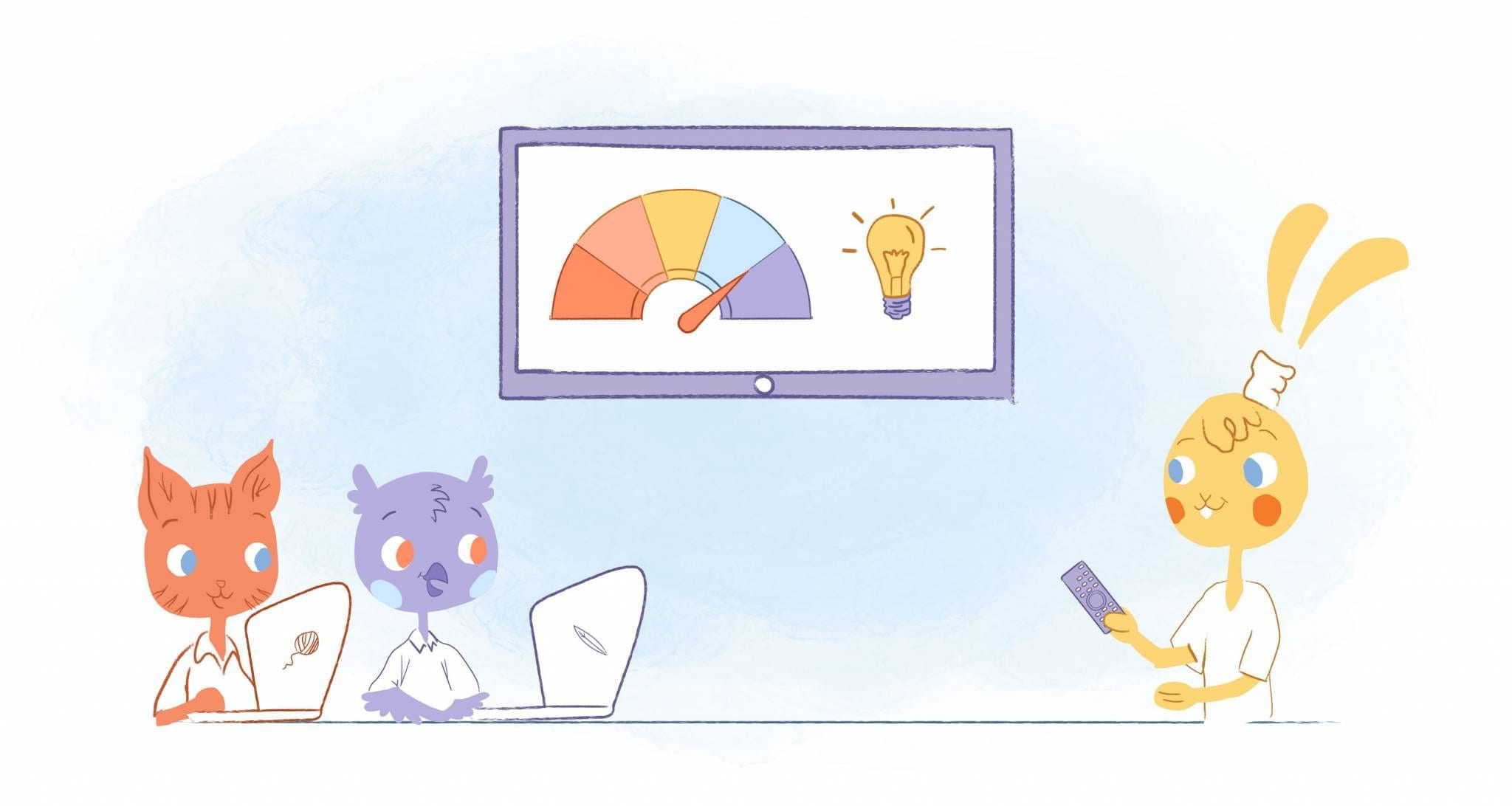

Analytics can be applied to a wide range of areas for businesses. But, perhaps none as impactful as team analytics. After all, your team is the lifeblood of your business. Why wouldn’t you want information that can help you manage and retain your top talent? Or, better yet — do you know how to improve your team boost their productivity?
But, that’s just the information that’s bubbling on the surface. Team analytics can let you know what’s going on behind the scenes of your team. And, here’s how.
Determine when your team members are the most productive.
When it comes to productivity analytics, you have your pick of the litter. Time Doctor tracks the time your time is working and time wasted. DeskTime can be used to determine the apps that your team relies on to be productive and which ones are distracting. And, there are also project management tools like Trello, Asana, and Wrike. These can track the progress of each team member’s individual development on a project.
Another perk of this? When you know when your team members are most productive, you can grant them autonomy. For example, if someone on your team is a night owl, then you shouldn’t be concerned when they aren’t cranking out work first thing in the AM.
There are also tools like Calendar. With its analytics feature, you can see where you and your team are spending their time in places like meetings. It can also give you a visual representation of where you frequently meet and whom you spend your time with.
Best of all? Calendar uses all of this data to make smart suggestions on what type of meetings to schedule — as well as when and who to invite.
Guide you in raising morale.
“Team productivity is about far more than the qualities and skills of the individuals involved,” writes Kayleigh Alexandra for Reflective Data. “It’s also about how the team members feel and how they interact.”
“Morale — both individual and on a team basis — is a mission-critical concern, because an unhappy team will struggle to perform and become stressed very easily,” adds Kayleigh. And, yes — analytics can assist you in improving your team’s morale by:
- Showcasing successes. Analytics gives you a chance to celebrate your team’s smaller wins instead of just the big and obvious ones.
- Highlighting strengths and weaknesses. In other words, offer praise by giving specific examples of where they excel. But, you also need to point areas that team members need to improve upon.
- Guiding feedback surveys. Using data to generate better surveys will make them more in-depth. It will also ensure full feedback.
Also, data can be used to help determine potential roadblocks. I don’t know about you, but when things hit a snag, I get frustrated. Will analytics be able to predict every possible worst-case scenario? Of course not. But, it can be used to predict things like equipment failure, delivery issues, or any other external factor that may hold items up, which gives you and your team a chance to prepare.
Implements KPIs.
“A key performance indicator (KPI) is a way to evaluate the success of an activity that an organization or department engages in,” explains Daniella Alscher over at G2. “KPIs are values that can be measured against desired results.”
“High-level KPIs are focused on the overall performance of an entire business, while low-level KPIs focus on the performance of individual departments within that business,” adds Alscher. Usually, KPIs are used in marketing, sales, customer service, and HR. But, that can also be used to:
- Strengthen morale. “In this sense, tracking KPIs can be about acknowledging employees’ hard work.” It even secures “their feeling of accountability and responsibility,” writes Danielle Poleski for Klipfolio.
- Support business objectives. KPIs ensure that business objectives remain at the forefront of everyone within your company.
- Foster personal growth. KPIs allow “employees to monitor their performance and respond in the moment,” says Poleski. As a result, they’re “more likely to achieve their goals, and better understand how to do so in the future.”
They’re also essential for performance management. And, according to Poleski, this is “the definitive reason why key performance indicators are important.”
“Employee morale, culture, and capacity, among others, all contribute to performance,” adds Poleski. “KPIs simplify performance management by allowing everyone not only to see what they’re doing, but what others are doing as well.”
Having “transparency ensures everyone is working in the same direction, which simplifies lines of communication.” Why? “Because the answer to ‘How are we doing?’ is bundled into a clear number rather than hidden under spreadsheets and services or, worse yet, behind guesses,” explains Poleski. “So tracking your sales KPIs in an open, transparent way to increase accountability.”
Personalizes learning and training opportunities.
Like pretty much everything else in life, there’s rarely a “one-size-fits-all” approach. And, this is also true when it comes to your team’s learning and professional development.
Remember, data can highlight individuals’ strengths and weaknesses. Knowing this, you can then create a customized learning program based on this information. For example, if a team member lacks specific technical skills, analytics can pinpoint precisely the skills gaps that they’re lacking.
Another example would be using analytics to train and grow potential leaders. Let’s say that an employee possesses all the required hard skills, but they lack soft skills like empathy. Knowing this, you could mentor this individual so that they can develop this critical leadership trait.
Predicts employee performance.
Predictive analytics, which is based upon historical and real-time data, is being used to predict the performance and behavior of employees.
“Predictive analytics can be applied to the workforce to identify traits/patterns that account for bad or good performance on an individual and team basis,” explains Archana Jerath for SHRM. “Since analytics is an amalgamation of powerful mathematical algorithms, it also gives objective insight into their work preferences and the factors that drive their performance.”
One example of this is “how analytics helped a manufacturing firm predict what was wrong with employee performance.” Thanks to analytics, “this company discovered that morale of ten employees was down,” adds Jerath. The reason? Issues with the manager.
After pinpointing what was wrong, “management quickly stepped in to resolve the situation and take preventive measures before the employee performance deteriorated further.” Another example is HR, relying on analytics to identify engagement activities. Armed with this knowledge, “an organization can direct their investment towards initiatives that generate the highest interest in the engagement levels.” Moreover, “an organization can define measurable metrics that co-relate engagement and performance.”
As if that weren’t enough, this technology can be used during the hiring process. “Analytics can mine data on a candidate’s personality, behavioral traits, and skills to throw useful insights into whether he or she would be the right fit for the organization,” writes Jerath. Needless to say, that can save your business a ton of time and money since you’re only investing in the right players for your team.
Pick out emerging trends and patterns.
Finally, you can keep your team engaged and motivated by using analytics to identify trends. How’s this the case? Well, this lets you stay ahead of your competitors. It also ensures that everyone within your organization is well prepared to meet these upcoming changes.
What’s more, it can help your team brace themselves for possible challenges. It can also help them make more informed decisions. Or, better yet, data analytic tools help let you know that you’re compensating your team fairly and which team-building activities are most active.











Howie Jones
My name is Howie and I'm a Customer Success Manager at Calendar. I like to ensure our customers get the best experience using our product. If you have questions email me howie at calendar.com